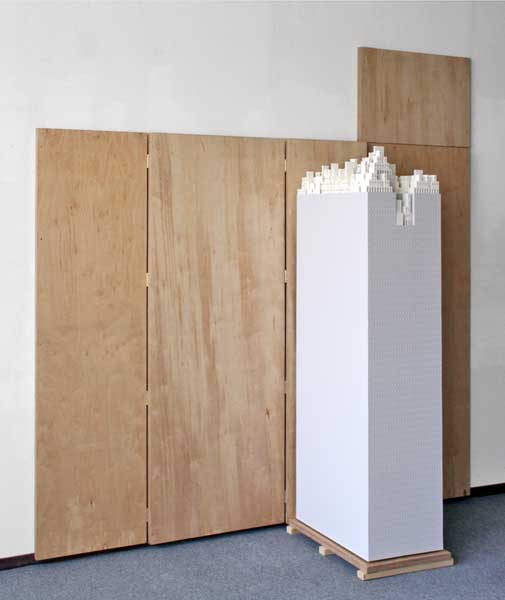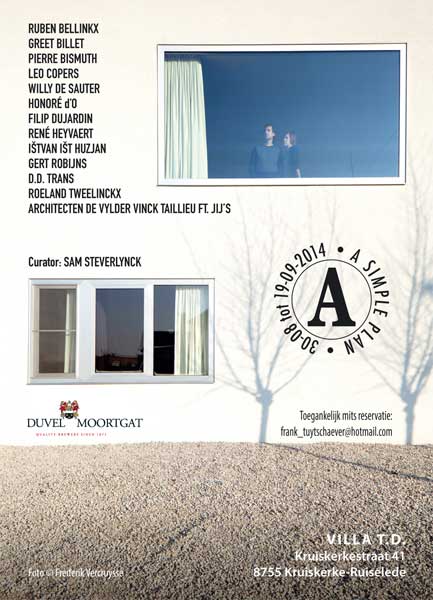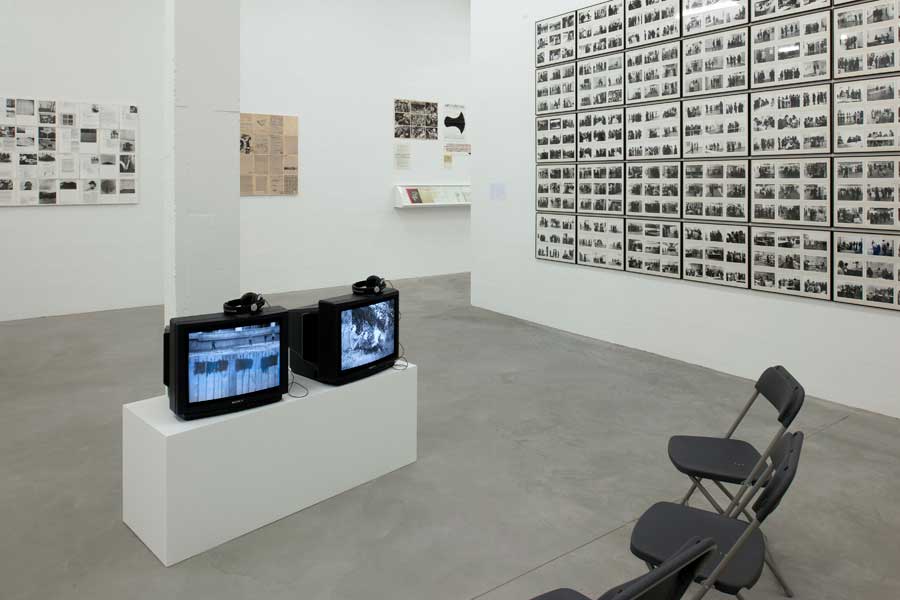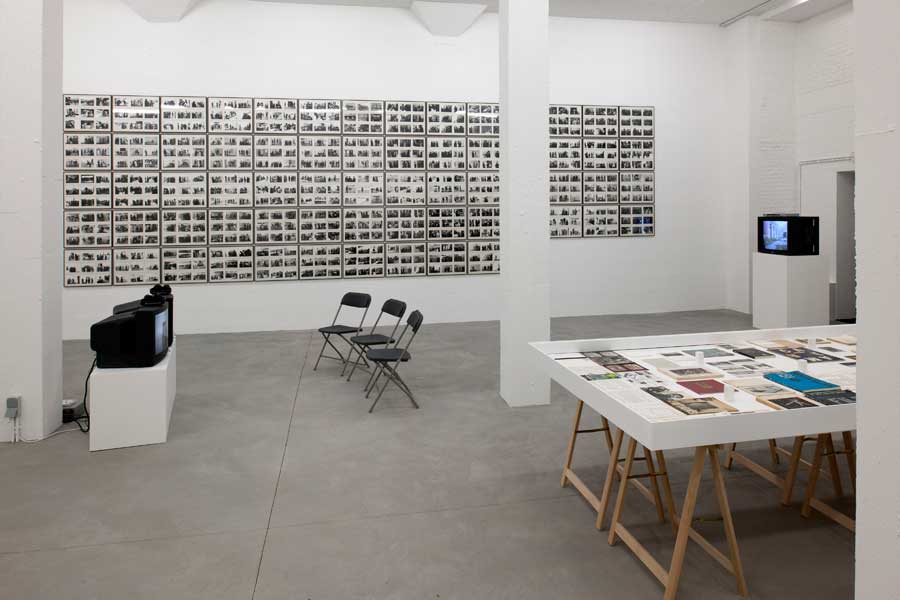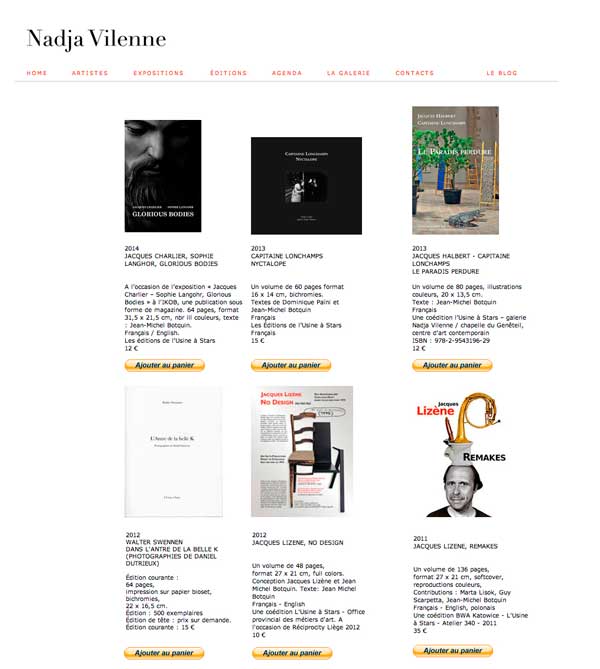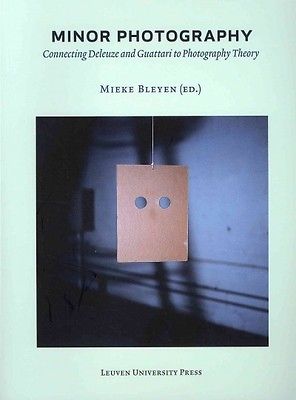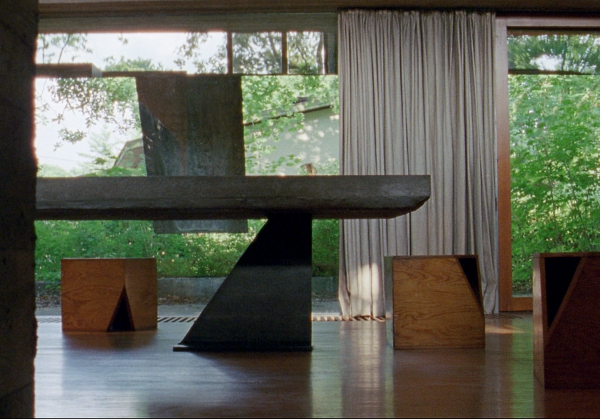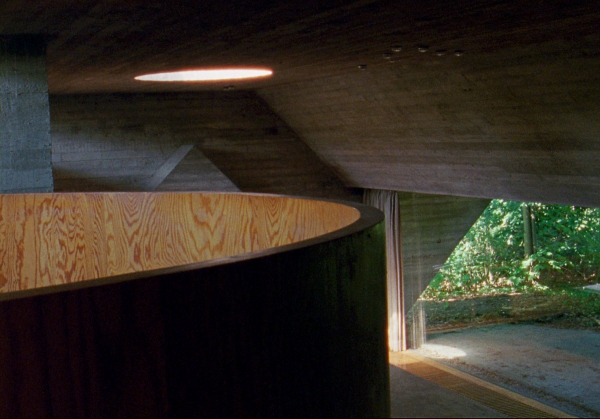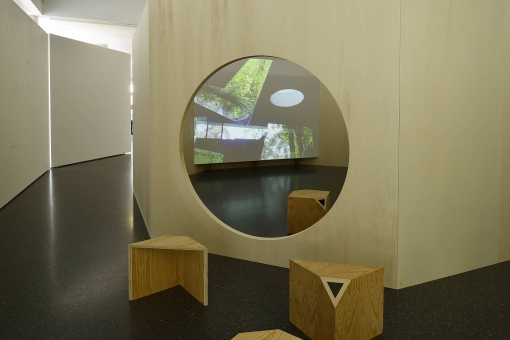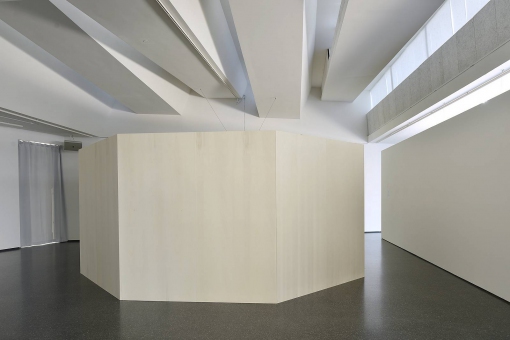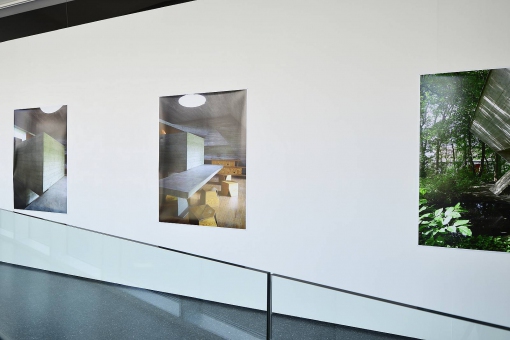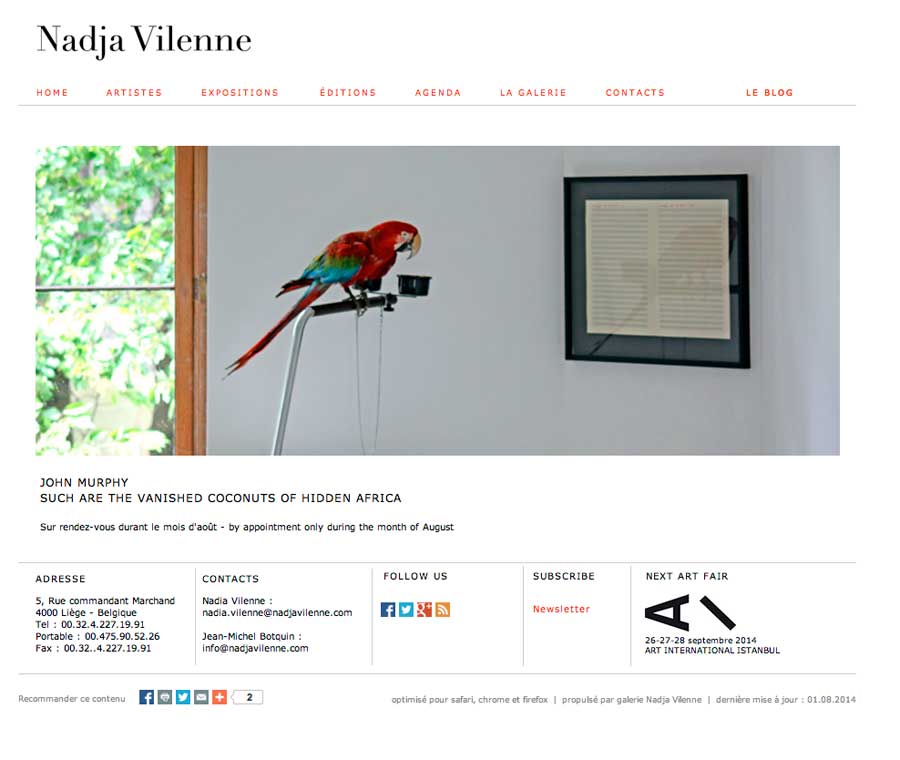Jacques Charlier
– Gent (B), Genuine Conceptualism, Herbert Foundation, 4 juillet- 08 novembre 2014 (curator : Lynda Morris)
Honoré δ’O
– Kruiskerke (B), A simple plan, Villa TD, du 30 août au 20 septembre
Eleni Kamma
– Liège, galerie Nadja Vilenne, du 13 septembre au 18 octobre
– Nicosie (Chypre), Treasure Island, Nicosia Municipal Arts Centre-Associated with the Pierides Foundation, 19 septembre – 8 novembre
Suchan Kinoshita
– Heerlen (Nl), Tussenbeelden, Schunk*, du 6 juin au 7 septembre.
Aglaia Konrad
– Hasselt (B), DiverCITY, CIAP, du 21 juin au 5 octobre.
– Wien (At), Hollein, MAK, du 25 juin au 5 octobre.
– Salzburg (AT), Das Haus (ausgestelt), Fotohof, du 25 juilet au 13 septembre
Sophie Langohr
-Sittard (Nl), Like a Virgin, Maria als Wonder Woman, Oda Park, du 21 septembre au 15 février 2016
Jacques Lizène
– Bruxelles (B), Entre deux chaises, un livre (collection Galila Hollander- Barzilai), Villa Empain, fondation Boghossian, au 1 mars au 7 sept 2014.
– Paris (F), Le mur, collection Antoine de Galbert, La Maison rouge, du 14 juin au 21 septembre.
– Marche en Famenne (B), Cherchez l’intrus, musée de Marche, du 17 juin au 20 décembre.
– Périgueux (F), L’empreinte des sensibles, collection FRAC Aquitaine, jusqu’au 2 novembre.
– Nice (F), Ben fait son Charafi, La Menuiserie, du 6 septembre au 6 novembre
– Berlin (De), DJ’s verboten, La plaque tournante, jusqu’au 8 octobre
Capitaine Lonchamps
– Paris (F), Le mur, collection Antoine de Galbert, La Maison rouge, du 14 juin au 21 septembre.
– Chinon (F), Roulez des mécaniques, musée d’art et d’histoire de Chinon, du 28 juin au 19 octobre.
Emilio Lopez Menchero
– Bruxelles (B), Silver Bliss #2 : Portrait of a city, Argos Center for Art and media, du 14 septembre au 26 octobre
– Bastogne (B), Fernand Léger, Mémoires et couleurs contemporaines, L’orangerie, espace d’art contemporain, 13 septembre – 11 novembre.
– Rennes (F), Gogolf échelle 1, un projet de François Curlet, La halle de la Courrouze, Les Ateliers de Rennes, biennale d’art contemporain, du 27 septembre au 30 novembre
Jacqueline Mesmaeker
– Antwerpen (B), Allegory of the Cave Painting, du 20 septembre à décembre
John Murphy
– Paris (F), All that fall, galerie Bernard Bouche, du 6 septembre au 25 octobre
Valére Sonnier
– Istanbul (Tu), Art International, Istanbul, galerie Nadja Vilenne, du 26 au 29 septembre
– Liège (B), galerie Nadja Vilenne, du 13 septembre au 18 octobre
Jeroen Van Bergen
– Liège (B), galerie Nadja Vilenne, du 13 septembre au 18 octobre
– Amsterdam (Nl), Huizenzee #2, Witteveen Visual Art Centre, Galerie Witteveen, du 30 août au 27 septembre
– Amsterdam (Nl), Cityscapes gallery, du 27 septembre au
Marie Zolamian
– Jehay (B), art et métaux, biennale d’art contemporain, du 29 juin au 19 octobre.
– Lessines (B), Addenda, musée de l’Hôpital Notre Dame de la Rose, du 14 juin au 30 novembre.
[sociallinkz]
